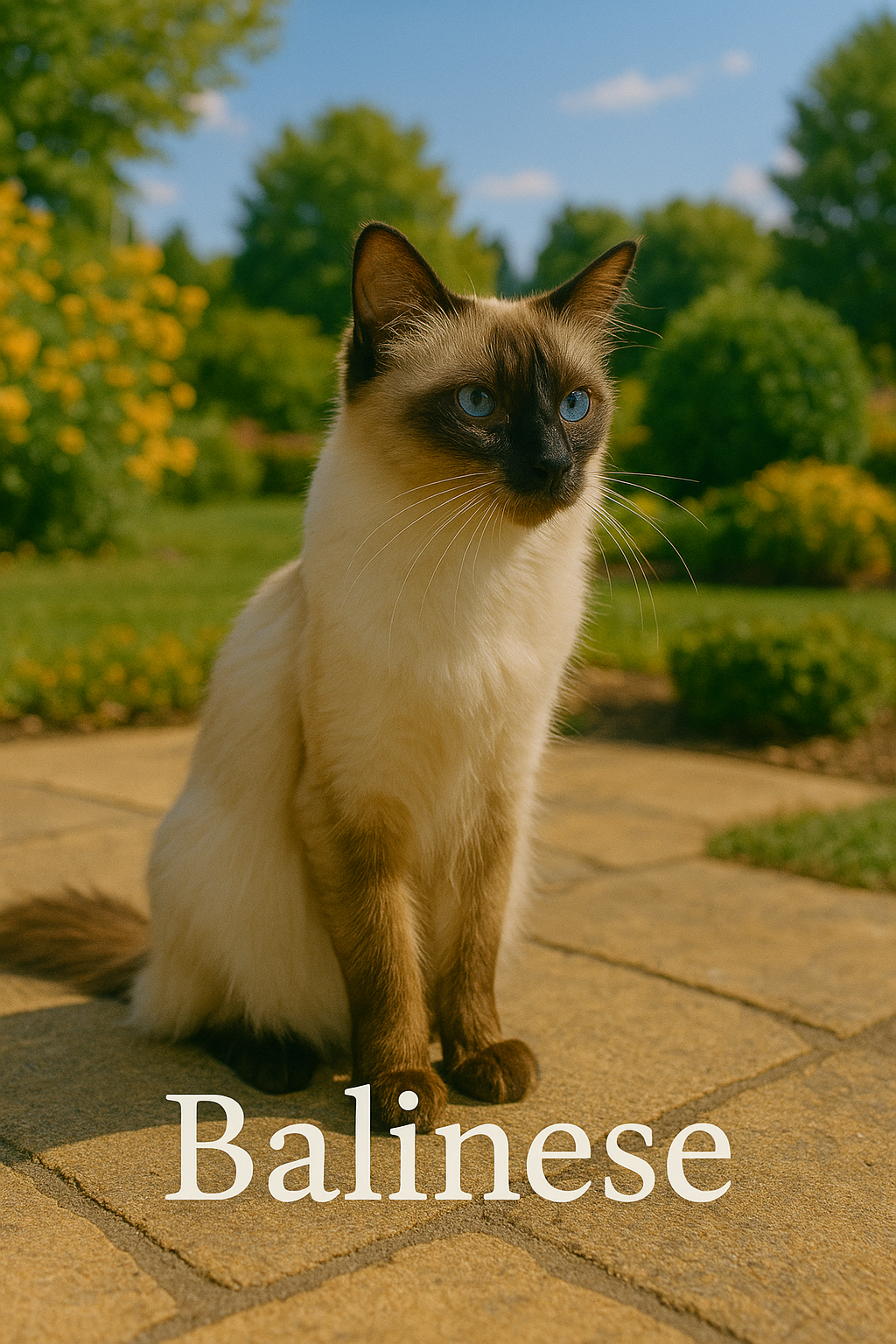🐾 Balinese: The Graceful Dancer with a Silky Coat and Sharp Mind 🐾
Elegant, expressive, and incredibly intelligent, the Balinese is a longhaired variation of the Siamese cat—combining the Siamese’s sleek style and talkative personality with a luxurious silky coat and a slightly softer demeanor. Named after the flowing movement of Balinese temple dancers, this breed is as graceful as it is affectionate.
🌺 Origins and History
The Balinese breed originated in the United States during the 1940s and 1950s, when breeders of Siamese cats began to notice kittens born with longer-than-usual coats. These longhaired Siamese were not accepted into the Siamese show standard, but their striking beauty and friendly nature attracted interest.
Rather than discarding the trait, breeders developed a distinct line, and by the 1970s, the Balinese was recognized as a separate breed by major cat associations, including the Cat Fanciers’ Association (CFA) and TICA.
Despite their name, Balinese cats have no connection to Bali or Indonesia—the name was chosen simply because of their elegant movement, reminiscent of traditional Balinese dancers.
🐈 Appearance
The Balinese has the same elegant body and pointed pattern as the Siamese, but with a medium-length, silky coat that flows without being overly fluffy.
Distinctive features:
- Long, fine-boned body with sleek muscle and a graceful stance
- Medium-length coat that’s soft and silky—no undercoat, so it lies flat
- Plumed tail that fans out like a feather
- Deep blue, almond-shaped eyes
- Color-pointed pattern, with a pale body and darker “points” on the face, ears, legs, and tail
(Common colors include seal, blue, chocolate, lilac, and newer colors like red and cream)
Their appearance is both refined and athletic, with an almost regal aura.
😻 Personality and Temperament
Balinese cats are known for their intelligence, affection, and talkative nature. If you want a cat that’s deeply involved in your life, the Balinese is an ideal choice.
Why people adore them:
- Extremely affectionate and loyal, often forming strong bonds with one person
- Highly intelligent, able to learn tricks and routines
- Chatty, with a slightly softer voice than the Siamese, but just as expressive
- Energetic and playful, enjoying interactive toys and games
- Sociable, often following you from room to room and joining in on daily tasks
They crave companionship and are happiest when they’re included in family activities.
🧼 Care and Grooming
Despite their luxurious coat, Balinese cats are low-maintenance when it comes to grooming.
Care tips:
- Brush 1–2 times per week to remove loose hair and keep the coat sleek
- Regular nail trimming, ear cleaning, and dental care
- Mental stimulation is key—puzzle toys, climbing trees, and interaction help prevent boredom
- Keep them indoors, as they are trusting and may not fare well outdoors
Balinese cats are generally healthy but may be prone to genetic conditions similar to Siamese cats, such as crossed eyes, progressive retinal atrophy (PRA), and respiratory sensitivities. Reputable breeding and regular vet visits are important.

Fun Fact:
Despite their long fur, Balinese cats don’t have an undercoat, which means they shed less and are easier to groom than most longhaired breeds.
🏡 Ideal Home
Balinese cats are suited to homes where they’ll receive plenty of attention and stimulation.
Perfect for:
- Families, singles, or seniors who want an interactive, talkative companion
- Homes with children or other friendly pets
- Cat owners looking for a beautiful, affectionate cat that’s not too high-maintenance
- Those who appreciate a lively, clever, and loving presence
These cats don’t like being alone for long periods, so they do best in households where someone is usually around—or with another friendly pet for company.
With their graceful elegance, chatty nature, and deep devotion to their humans, the Balinese cat is a stunning and loving breed that brings beauty and intelligence into any home. If you’re looking for a feline friend with the heart of a companion and the grace of a dancer, the Balinese may be your perfect match.
